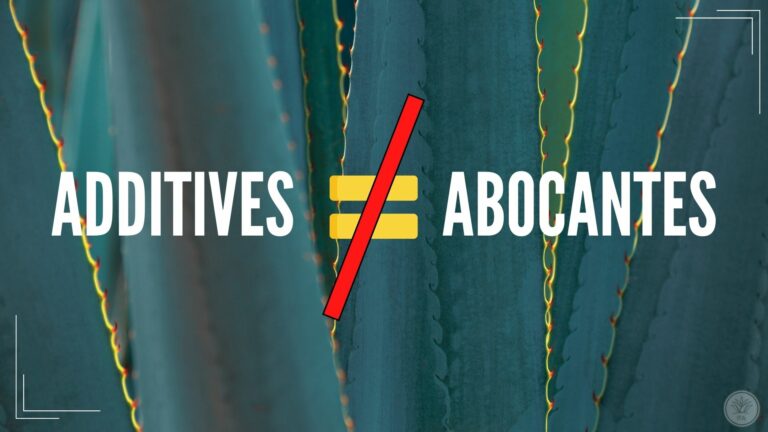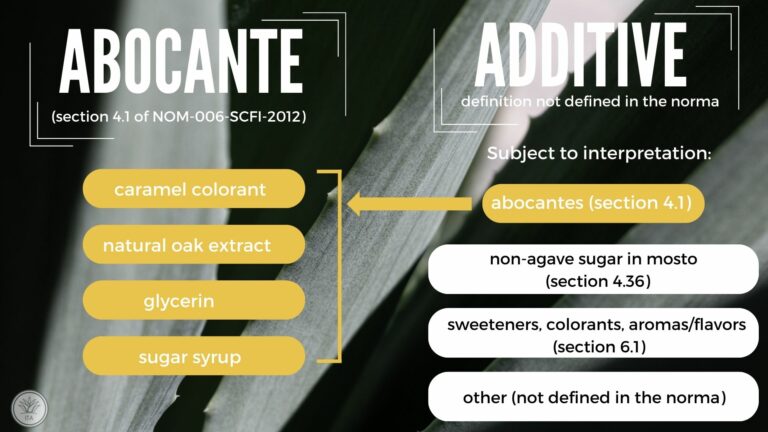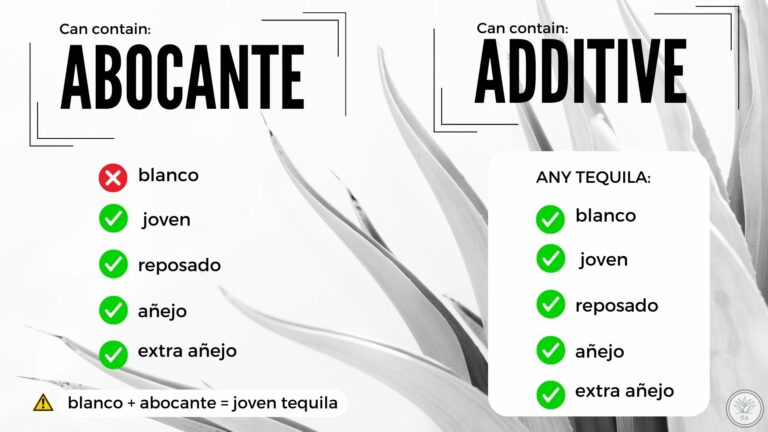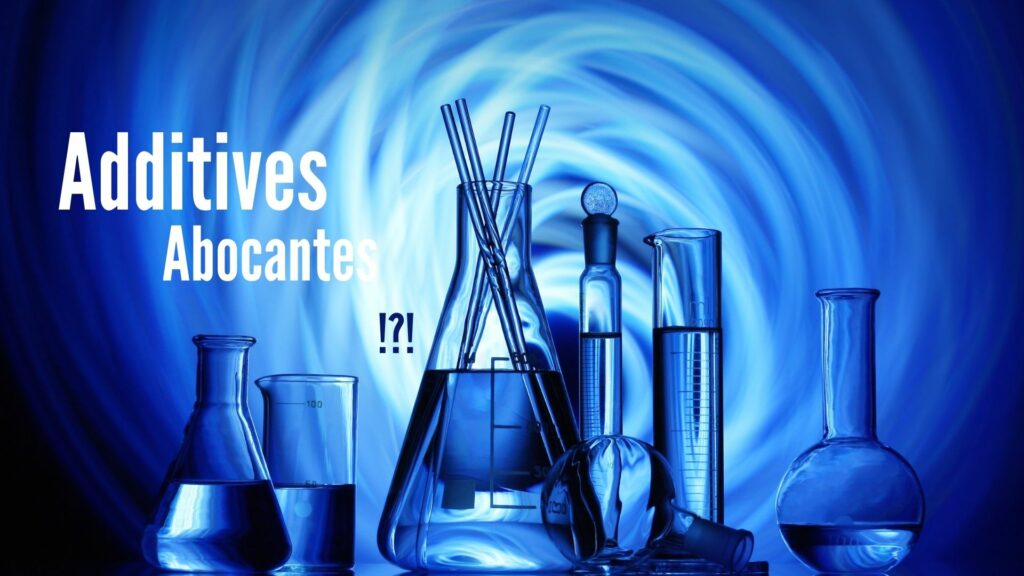The tequila legislation is complex, boring and the information is spread across many different sections. No wonder why there are so many misconceptions. The issue is, these misconceptions themselves shape the way we think about additives. Since the Denomination of Origin is protected by law, everything we need to know about additives is in there.
So let’s take a look at all the misconceptions according to the relevant legal piece, NOM-006-SCFI-2012 referred to as the Norma.
#1. Additives have a clear cut definition provided by the tequila legislation – FALSE
TRUTH – Using the terms “additive” is subject to individual interpretation as it is not defined in the tequila legislation
Since “additives” or “aditivos” as a term is not defined in the legislative piece governing tequila production, it can be defined in any ways any individual may see fit.
It would take an entire article to explain all the different additives people refer to – pre-production, on-production and post-production – we will cover this another time in another article.
Remember – Without a legal definition, the term “additives” is subject to individual interpretation and as a result a lot of confusion.
#2. Abocantes is the Spanish word for Additives – FALSE
TRUTH – Abocantes are a legally defined small segment of the large group of additives. Additives and abocantes are not one and the same and it is not accurate to use them interchangeably.

Abocante:
Abocante is a legal definition in the norma. (section 4.1) It strictly means four components – nothing less, nothing more:
- Caramel colorant
- Natural oak extract
- Glycerin
- Sugar syrup
Additive:
Additive a subjective definition NOT defined in the norma. It can mean the following depending on interpretation:
- Abocantes (section 4.1)
- Sweeteners, colorant, aromas/flavors (section 6.1)
- Adding non-agave sugar into the mosto to produce “mixto” tequila (section 4.36, not everyone considers these as additives)
- Other Additives not covered in the Norma.
The Norma doesn’t cover all the additives that producers can add to tequila. If the norma doesn’t regulate the use of an additive, it may be used freely without any legal risk – as long as the product meets the chemical parameters set by the chart at section 6.1. These other additives can be fermentation additives (OH, acids, nitrogen sources etc) and viscosity additives (pectin, glycol etc). Potential additives that are added to the soil are also not regulated (depending on how additive is defined).

It is important to separate the two terms as the way the industry can use them is different.
Abocantes can be added to tequila joven, reposado, añejo and extra añejo. Abocante cannot be present in blanco tequila as the producer would have to reclassify it as a joven/gold tequila. (section 4.36.1-4.36.5)
Additives can be added to ANY tequila as long as it doesn’t violate the rules set by NOM-006-SCFI-2012.
Remember – to avoid confusion, it is best to define specific additives in Spanish or by the section of the Norma. If a translation is necessary, it should be as specific as it can be. When referring to abocante, we recommend translating it to “mellowing” additives or Section 4.1 additives. For example if a product has a bubble gum or cake flavor, it is likely due to Section 6.1 flavoring/aroma type additives and not section 4.1 abocantes.
#3. Blanco tequila cannot have additives – FALSE
TRUTH – Blanco tequila CAN have added sweetener, colorant and flavor/aroma as per section 6.1. It CANNOT have abocantes (section 4.1).
Blanco tequila is “sin abocantes” or in English “without abocantes”. So a blanco tequila cannot have abocantes as per section 4.1, however producers can add section 6.1 additives. (colorants, sweeteners, flavors/aromas).
In fact, if a producer decides to add “abocante” to its blanco tequila, it has to be reclassified as joven or gold as per section 4.36.2.

Remember – not knowing the Norma or deliberately misusing it is a legal risk that brands and producers have to carry. Any amount of post-production additive that intensifies or alters the color, aroma or flavor has to be present on the label as per section 6.1. For example added sweetener in a blanco tequila if disclosed it is legal. If the same added sweetener is undisclosed, it is a violation of the Norma.
#4. Blanco tequila can only have additives due to a loophole in the norma – FALSE
TRUTH – Blanco tequila can have additives legally as per section 6.1 (as long as the producer discloses them). Other additives that are not regulated by the norma may be added without any legal risk.
There is no legal loophole for additives under section 6.1 as they can clearly be added into tequila. There are other post-production additives not mentioned by the Norma regulating the viscosity and the acidity of the product – these too can be added. The confusion probably originates from someone translating abocante as “additives” in English. For example translating “blanco tequila” to “white tequila” could similar issues – a “cristalino” tequila has a white color, yet is not a tequila blanco.
Remember – When interpreting legal text and want to avoid generating confusion, refer to the original language (in this case Spanish) that has a legally binding effect.
#5. Additives have a 1% volume limit – FALSE
TRUTH – Additives (post-production) have very complex limits depending on the category of the additive (4.1 and 6.1) and the classification of the tequila in question. In addition, for abocantes there is a secondary dry extract limit as well further limiting their use.
People want clear cut definitions, yet the limit for additives is over regulated and very complex. To make things worse, not all limitations are exact. Abocante has a primary limit of 1% of each of the four individual abocante by volume. And then there is a limit for every solids – 5g/L for non-blanco tequilas. The solid limit (dry extract) is “shared space” between abocantes, the natural minerals from the water and the oak extracted from the barrel.
Here are the current limitations as per the norma sections 4.1, 6.1 and 4.36.1-4.36.5:

Abocantes 4.1 (aged tequilas+joven, not disclosed):
- Caramel coloring: 1%
- Glycerin: 1%
- Sugar Syrup: 1%
- Natural oak extract: 1%
- Total solids (shared abocante + natural): 5g/L
6.1 Additives: sweetener, colorant, aroma/flavor (all tequilas, disclosure required):
- Total Sugar: 75 g/L
- Total Solids (shared additives + natural): 85 g/L
#6. Only additives that are added in quantities over 1% volume have to be disclosed – FALSE
TRUTH – The rule of Disclosure depends on the type of the additive and not the actual volume added.
There is a statement you can find on the internet: additives that are added in quantities over 1% of volume have to be disclosed. This statement is nowhere to be found in the norma and as such is not legally binding. Producers doesn’t have to follow this rule.
Here is the actual disclosure rule based on the type of additive:
Section 4.1 category abocantes DON’T need to be disclosed. The norma doesn’t say it has to be, so it never needs to be.
Section 6.1 category additives ALWAYS need to be disclosed. The norma clearly says it has to be under section 11.1 c). There is no exception, no limit set anywhere, so even a single drop of additive in this category needs to be disclosed. Brands not disclosing this are in clear violation of the tequila “law”.
Section 4.36 added up to 49% non-agave sugars into the mosto need to be ALWAYS disclosed indirectly with the lack of 100% agave sign on the label. Note: not everyone regards these added sugars as additives.
Any other additives outside of the above not defined by the norma don’t need to be disclosed.
Remember – If it’s not in the Norma, it is not a rule and producers are not obligated to follow it.
#7. If a tequila is additive free it is also authentic – FALSE
TRUTH – An authentic process is additive free, but even a tequila produced with modern diffusers and column stills may be regarded as additive free.
This one is somewhat subjective as neither the “additive free” nor the “authentic” are legal definitions, so we can’t use the norma here.
A diffuser process coupled with a column still can produce a tequila that has no additives according to some opinions. However, no one in the industry I know of has ever considered diffuser made tequila to be authentic.
No one with one exception – the CRT. According to them, every tequila is “authentic” as long as it is produced in Mexico and carries their approval. So again, objective term and a different viewpoint – can’t argue with it. Even assuming that all (CRT certified) tequilas are authentic, not all of them are necessarily additive free.
I hope you enjoyed this article about deciphering some of the misconceptions about additives. If so please share this article so others can learn how to use the terms better. If you believe there is something incorrect or not clearly referenced, your feedback is more than welcome! We are here to provide the most accurate and professional information about tequila and every help is appreciated!
Here you can check out our older articles about additives if you want to learn more:
Feel free to leave your comment or feedback – let us know what you think!

